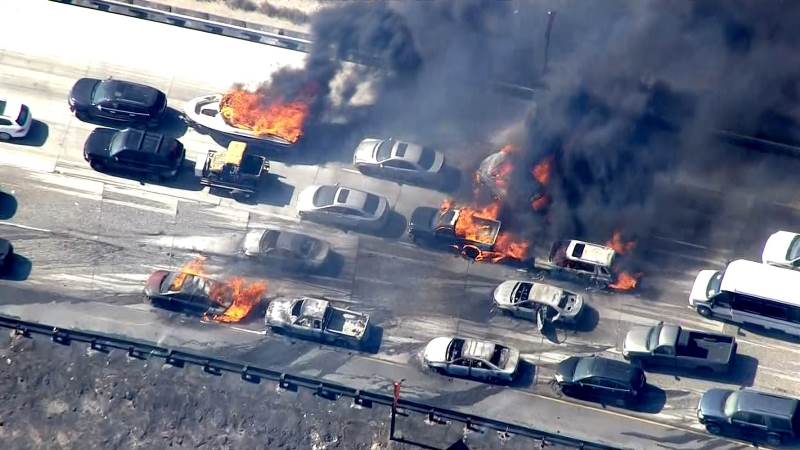
And the numbers are still growing: 65 large fires are currently raging across the country, particularly in California, Oregon, Washington, Idaho and Montana. That includes three Washington state fires or fire complexes that are larger than 100,000 acres burned.
As of this writing, the United States remains at wildfire preparedness level 5 — the highest level — where it has been since Aug. 13.
There are only six other years that have seen more than 8 million acres burned — 2012, 2011, 2007, 2006, 2005, and 2004 — based on National Interagency Fire Center records that date back to 1960. It is hard not to notice that all of these years came since the year 2000.
2015 has already surpassed 2004's total of 8,097,880 acres burned. The worst year of them all, 2006, saw 9,873,745 acres consumed.
But here's the thing — as of September 1, 2015 was ahead of the pace of 2006 and all other years. While 2015 has seen 8,202,557 acres burned thus far, 2006 had only seen 7,663,928 acres burned as of that date.
It's important to acknowledge the key reason that 2015 is out ahead right now: A blockbuster wildfire year in the state with the biggest capacity to contribute acres to the total — Alaska. Over 5 million acres burned there earlier this year. But as Alaska slows down its burning, other states are coming on strong — especially Washington state, where 921,249 acres have burned in 16 currently burning fires or fore complexes — to say nothing of those that have been contained or put out. So Alaska's contribution starts to look a little less lopsided.
So is it sensible to raise the possibility of a new record by the end of the year? I called Jennifer Jones, spokeswoman for the U.S. Forest Service, who agreed with me that it's a possibility.
"While nobody around here really likes to make bets with where we'll end up with fire season, there's certainly the potential to hit that record mark," Jones said.
Considerably more acres are likely to burn this year, Jones noted, for several reasons. One is that many of the current large fires are at low containment levels. "A lot of those aren't even at 50 percent containment, and some of those aren't even estimating containment until the middle of October, and there's a couple on here into November," Jones noted.
There's also the simple fact that there are four months left in 2015, and Southern California's wildfire season can be at its worst in the fall, thanks to the notorious Santa Ana Winds.
But it won't take a record in order to ensure that 2015's fire season has a major impact — on lives, homes, and also government budgets.
The Forest Service has said that it spends $100 million per week fighting fires when at national wildfire preparedness level 5 — and that this year, for the first time, wildfire expenditures will exceed 50 percent of its budget. Agriculture Secretary Tom Vilsack, whose department includes the Forest Service, has become increasingly vocal about how exploding wildfire expenditures undermine the Forest Service's ability to do other things that we expect of it — like maintain forests and trails.
All in all then, it's shaping up to be a year of reckoning when it comes to our country's increasingly vast and expensive wildfires.



Divert some of the billions we spend bringing 'freedom and democracy' to other countries towards fighting the wildfires, or maybe Obama could bring about a brief stay of the drone bombing campaign for a month, and, heck, who knows what kind of good things we could do with that money in the shit-hole becoming country.